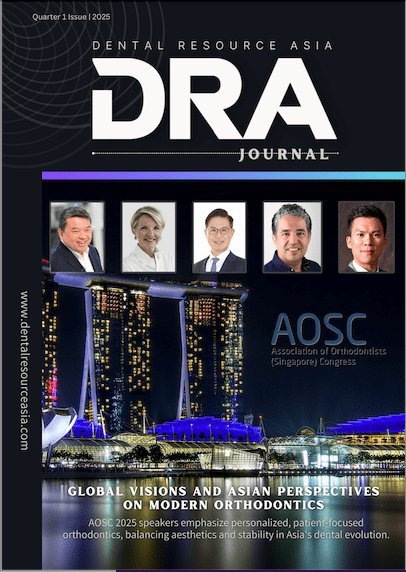Biofilms, microscopic microbial communities, pose a persistent challenge in dentistry, particularly in the context of dental implants. According to a study published in Nature, biofilm formation begins almost immediately after implantation, influenced by surface properties and environmental factors. While biofilms can coexist symbiotically with the host in a healthy state, disruptions can lead to peri-implant diseases, such as peri-implant mucositis (PIM) and peri-implantitis (PI).
PIM is described as a reversible inflammatory condition affecting the mucosa surrounding a dental implant. However, if left untreated, it can progress into PI, a severe condition that compromises soft tissues and bone, potentially leading to implant failure.
Understanding the Process of Biofilm Formation
The research highlights that biofilm formation begins within minutes of implant placement. A thin protein conditioning film called the salivary pellicle first forms on the implant’s surface, acting as a scaffold for microbial attachment. Initial colonizers such as Streptococcus and Actinomyces species dominate this early phase.
Over the following weeks, the biofilm matures, developing a robust extracellular polymeric matrix that shields bacteria from antibacterial treatments and the host’s immune responses. This matrix is a significant factor in the biofilm’s resilience and the challenge of managing peri-implant diseases.
Key Findings of the Study
The study, conducted by Sophie Dieckow and colleagues, investigated biofilm development on temporary dental implant abutments in 12 patients over three weeks using confocal laser scanning microscopy (CLSM) and full-length 16S rRNA gene sequencing. Key findings include:
- Complex, Patient-Specific Biofilms: Each patient’s biofilm displayed unique structural and compositional characteristics, underscoring the individualized nature of biofilm formation.
- Early Colonizers and Microbial Succession: The biofilm composition evolved from initial colonizers like Streptococcus and Actinomyces to include genera such as Fusobacterium, Prevotella, and Veillonella.
- Ecological Interactions: Early microbial communities created environments that facilitated the growth of anaerobic bacteria, highlighting complex interspecies interactions.
- High-Resolution Analysis: By combining CLSM with gene sequencing, researchers were able to link microbial composition with biofilm structure, offering detailed insights into biofilm dynamics.
Implications for Clinical Practice
The findings have significant implications for clinical dentistry, particularly in the prevention and management of peri-implant diseases.
- Enhanced Diagnostics: Improved tools for detecting changes in biofilm composition can aid early intervention.
- Preventive Measures: Developing implant surfaces designed to minimize microbial adhesion may reduce the risk of biofilm formation.
- Targeted Therapies: Treatments tailored to disrupt biofilm dynamics without harming surrounding tissues could improve patient outcomes.
“The unprecedented depth of early in vivo biofilm characterization,” the study notes, “provides the basis for future developments of early diagnostics as well as personalized prevention and treatment strategies for peri-implant infections.”
The Road Ahead: Research and Future Directions
Despite advancements, the study acknowledges gaps in understanding the roles of specific microbial species in biofilm development and dysbiosis. Additional research is needed to explore how individual genetics and environmental factors influence biofilm composition.
This research highlights the complexity of biofilm formation on dental implants and underscores the importance of personalized strategies in prevention and treatment. By leveraging advanced imaging and molecular techniques, the dental field can continue to improve the longevity and success of implants, ensuring better health outcomes for patients.
For further details, refer to the original study by Sophie Dieckow et al., published in npj Biofilms and Microbiomes (2024).
The information and viewpoints presented in the above news piece or article do not necessarily reflect the official stance or policy of Dental Resource Asia or the DRA Journal. While we strive to ensure the accuracy of our content, Dental Resource Asia (DRA) or DRA Journal cannot guarantee the constant correctness, comprehensiveness, or timeliness of all the information contained within this website or journal.
Please be aware that all product details, product specifications, and data on this website or journal may be modified without prior notice in order to enhance reliability, functionality, design, or for other reasons.
The content contributed by our bloggers or authors represents their personal opinions and is not intended to defame or discredit any religion, ethnic group, club, organisation, company, individual, or any entity or individual.

